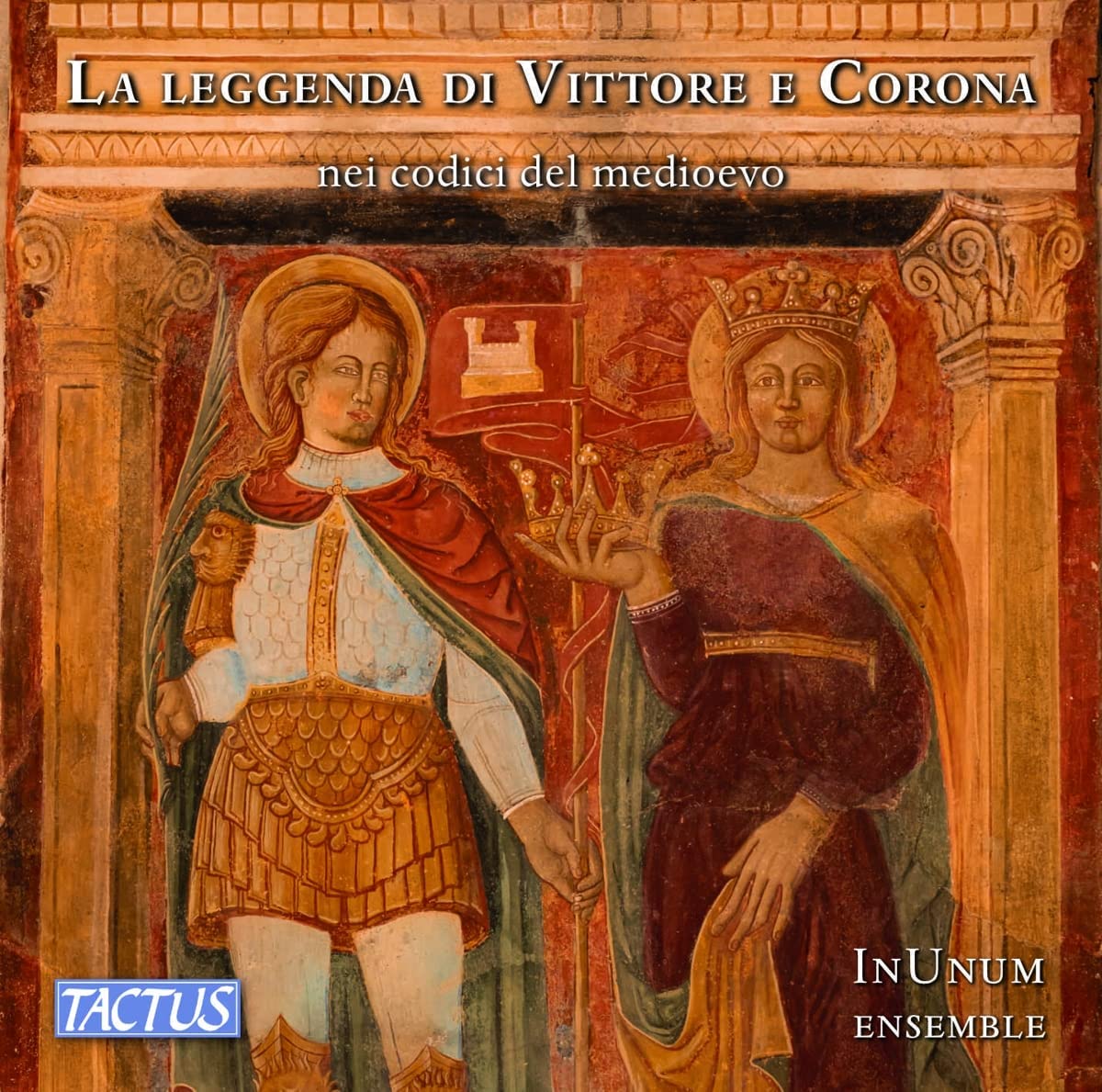InUnum ensemble
53:04
Tactus TC 220002
Click HERE to buy this album on amazon.co.uk
[Doing so supports the artists, the record company and keeps this site available – if no-one uses these sponsored links, this ad-free site will disappear…]
The magnificent Renaissance and Baroque music associated with St Mark’s Basilica in Venice can overshadow its earlier repertoire, and this liturgical music from the 13th century, associated with the legend of the martyrs Victor and Corona is a revelation. The template for Christian martyrs from Roman times who were made the subject of Medieval cults consists of them expressing their beliefs in ways incompatible with the pagan Roman Empire and then undergoing unspeakable tortures before their faith is vindicated. This is the case with Victor and Corona, although they are unusual in suffering in parallel with one another – twice the bravery and twice the suffering. The versatile InUnum Ensemble mainly sing unaccompanied – monody with drones and simple polyphony – as well as playing a variety of instruments. The singing is absolutely beautiful, expressive and clear as a bell, with perfect intonation. The instruments – percussion, harp, organistrum, organ, vielle and recorders – are judiciously and cleverly employed to enhance the power of the textual narrative, and I found myself drawn into these extended legends. Understandably, the extensive texts are not printed in the programme booklet, but are available online – having recently been at work on the equally gory cult of St Katherine (she of the wheel), I preferred to draw a veil over the more gruesome details of what poor Victor and Corona were subjected to. Inevitably in a CD of this sort of repertoire, we are ultimately reliant on the skills and musicality of the singers, and I was utterly beguiled by the singing of the InUnum Ensemble, as well as being thoroughly persuaded by the manner of presentation of the repertoire and the discerning use of instruments. In a telling footnote emphasising the vulnerability of such early repertoire, the manuscript was stolen from St Mark’s around twenty years ago – fortunately, it had by that time been scanned. My mind turned to the wealth of repertoire from this period which has not yet been scanned, nor even catalogued.
D. James Ross
